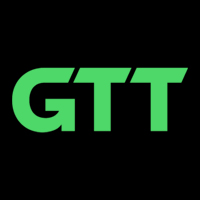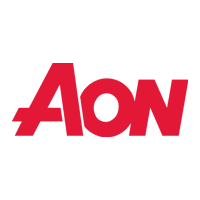How can we help?
Whether you're looking for expert ITSM consulting, cutting-edge technology solutions, award-winning training courses, or hands-on IT support, explore our website and use the search box to easily find the resources, insights, and services you need.
SIAM Strategy and Design
Most IT organisations rely on a complex mixture of internal and external parties to deliver IT services. To enable effective delivery, IT management must fully understand, measure, manage, and control all aspects of these services. Service Integration and Management (SIAM) is a framework that supports IT with integration, performance management, reporting, and collaboration across all parties. A well-defined SIAM Strategy and Design, particularly in how it is established, helps establish the structure and approach needed to manage multi-vendor environments effectively.
Optimise Multi-Vendor IT with Bespoke SIAM
Define objectives, assess your ITSM and build a tailored SIAM model to eliminate silos and boost collaboration and agility.
SIAM stands for Service Integration and Management. It is an approach used by organisations to manage multiple service providers and ensure cohesive and integrated delivery of IT services to meet business needs. With a strategic design implementing SIAM, organisations aim to provide a structured framework that enables them to effectively integrate, manage, and coordinate services from various internal and external service providers.
Approach
Our SIAM Strategy and Implementation Approach
Define the SIAM Strategy and Objectives
Assess the Current State
Design the SIAM Operating Model
Continual service improvement
Pink Elephant has designed and implemented effective operating models/ SIAM frameworks for many organisations. We can draw on this experience to help design the right model for your organisation. We usually commence with a SIAM Strategy and Design workshop, including the following key steps:
Pink Elephant has designed and implemented effective operating models/ SIAM frameworks for many organisations. We can draw on this experience to help design the right model for your organisation. We usually commence with a SIAM Strategy and Design workshop, including the following key steps:
- Define the SIAM Strategy and Objectives
- Vision and Goals: establish the vision and objectives of the SIAM initiative, aligning them with the organisation’s strategic goals.
- Scope: determine the scope of SIAM, including which services and providers will be integrated. Crafting a detailed SIAM Design will be crucial.
- Assess the Current State
- Current ITSM Practices: evaluate the existing IT Service Management practices and processes.
- Service Provider Landscape: identify all current service providers and their roles.
- Pain Points and Challenges: document existing challenges and areas for improvement in managing multiple providers.
- Design the SIAM Operating Model
- SIAM Framework: develop a SIAM framework that outlines the integration model and fully incorporates the strategy.
- Organisational Structure: define the roles and responsibilities within the SIAM ecosystem, including the service integrator role. Determine the necessary skill sets and recruit the team members
- Governance Structure: establish a governance model to oversee the SIAM implementation and ongoing operations.
- Continual service improvement: Regularly review processes, and implement improvements based on feedback and performance data.
Benefits
- Improved Service Quality: consistent and reliable service delivery across multiple providers through a comprehensive SIAM Strategy and Design.
- Enhanced Efficiency: streamlines processes, reduces duplication of efforts, and optimises resource utilisation.
- Increased Agility: the SIAM Design makes it easier to quickly adapt to changes in the business environment of requirement and it provides the ability to scale services up or down based on demand.
- Better Risk Management: Identifies and mitigates risks associated with service delivery and provider relationships.
- Cost Savings: optimises costs through improved efficiency and better management of service contracts and resources.
- Improved Stakeholder Satisfaction: enhances communication, collaboration, and transparency, leading to higher stakeholder and customer satisfaction.
Ready to Transform Your IT with a Tailored SIAM Strategy?
Partner with Pink Elephant’s experts to design and implement a SIAM framework that optimises your multi-vendor IT management.
Case studies

Growth powered by Pink Elephant’s SIAM IT Service Desk
Corplex (formerly DS Smith Plastics, Extruded Products) is a leading manufacturer of innovative reusable packaging. With a history spanning 50 years, Corplex rebranded in 2020 after being acquired by Olympus Partners. The company is dedicated to sustainability and excellence, establishing itself as a trusted name in the Reusable Transport Packaging...

Bespoke Customer Service training programme for GTT
Pink Elephant EMEA builds on the success of a GTT’s customer service offering with a bespoke virtual training programme. Find out more below about the objectives, challenges, and successes of delivering a training programme to 250+ GTT employees, in three countries, across three time zones. Find Out More about Customer...

AON optimises ITSM and UX
Aon PLC, a leading British-American multinational professional services firm, offers a wide range of financial risk-mitigation products, including insurance, pension administration, and health insurance plans. To continue delivering exceptional service across its global operations, Aon sought to transform its IT Service Management (ITSM) practices and enhance the user experience. The...